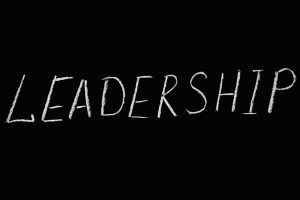
Creating a collaborative and inclusive work environment is essential for innovation and productivity. However, one persistent challenge, particularly in tech-heavy organizations, is technical elitism, an attitude where certain individuals or groups believe their superior technical skills or knowledge entitle them to more respect, authority, or influence. Left unchecked, this mindset can undermine team cohesion and stifle creativity.
In this article, we will delve deeper into what technical elitism is, its damaging impact, and most importantly, actionable strategies to eliminate it and build an environment where all employees feel valued, no matter their technical background.
What is Technical Elitism?
At its core, technical elitism is a mindset that places undue emphasis on technical prowess as the primary marker of value within an organization. It often leads to an unspoken hierarchy where technical experts feel superior, sidelining those with less technical knowledge, even if their contributions are just as critical. Here are some ways this behavior manifests:
- Exclusive Language: Relying on jargon or technical terminology that leaves non-technical team members feeling out of place.
- Dismissive Attitudes: Undervaluing the insights and contributions of colleagues who may lack deep technical expertise but offer valuable perspectives.
- Gatekeeping: Withholding information or resources as a way to maintain a sense of control or superiority.
- Clique Formation: Creating divisions within teams where the “tech-savvy” stick together and exclude others from decision-making and discussions.
The Impact of Technical Elitism
The ripple effect of technical elitism can significantly harm team dynamics and organizational health. Some of the key consequences include:
- Stifled Innovation: When only a select group of individuals feel empowered to contribute, the flow of fresh ideas slows, ultimately hampering creativity and problem-solving.
- Reduced Morale: Team members who feel left out or undervalued may disengage, leading to lower job satisfaction, higher turnover, and missed opportunities for professional development.
- Communication Breakdowns: Elitism can exacerbate communication barriers, especially between technical and non-technical teams, leading to misunderstandings and reduced operational efficiency.
- Limited Growth Opportunities: When technical elitism goes unchecked, it’s common for less experienced or non-technical employees to be overlooked for promotions or development, resulting in a stagnant and demotivated workforce.
Strategies for Addressing Technical Elitism
Tackling technical elitism requires deliberate action from leadership and a commitment to building a culture that values diversity in all its forms, including technical and non-technical skill sets. Here are several strategies that can help:
1. Promote a Culture of Respect and Inclusion
- Celebrate Diverse Contributions: Recognize and highlight the unique strengths that each team member brings to the table. Whether through shout-outs in meetings or company newsletters, make it clear that every role is critical to success.
- Inclusive Language: Encourage team members to use clear, accessible language when discussing technical topics. Offer training in effective communication, emphasizing the importance of breaking down complex ideas in ways everyone can understand.
2. Foster Knowledge Sharing
- Establish Mentorship Programs: Pair technical experts with less experienced employees in formal mentorship arrangements to encourage collaboration and continuous learning. This also helps break down elitist barriers, as mentorship emphasizes mutual growth.
- Centralized Documentation: Develop robust, accessible documentation of technical processes and information, so that knowledge is openly shared, not hoarded.
3. Encourage Open Communication
- Feedback Loops: Implement regular feedback sessions to ensure all employees, regardless of their role, can voice concerns, share experiences, and suggest improvements. Address signs of elitist behavior early.
- Transparent Decision-Making: Ensure that decision-making processes are inclusive, with input sought from a wide range of team members, not just the most technically proficient.
4. Lead by Example
- Inclusive Leadership: Leaders should model inclusive behavior by actively engaging with all employees, valuing input from a broad range of voices, and demonstrating respect for different skills and experiences.
- Address Elitism Head-On: When technical elitism is observed, confront it directly but constructively. Use these moments as learning opportunities to emphasize the value of diversity in thought and experience.
5. Encourage Cross-Disciplinary Collaboration
- Cross-Functional Teams: Create opportunities for employees with different skill sets to work together on projects. This helps everyone appreciate each other’s contributions and fosters mutual respect.
- Team Building Activities: Organize events and activities designed to encourage collaboration and communication among all employees, not just within technical teams.
6. Develop a Growth Mindset Across the Organization
- Continuous Learning: Cultivate a culture where continuous learning is celebrated. Encourage employees to develop not just their technical skills but also interpersonal, leadership, and communication skills.
- Reward Growth and Effort: Shift recognition programs to focus on growth, effort, and collaboration rather than only rewarding technical achievements. This can reinforce the importance of holistic contributions to the organization’s success.
Additional Measures to Address Technical Elitism
7. Break Down Hierarchical Structures
- Flat Leadership Models: Consider adopting flatter leadership models where decision-making and responsibility are more distributed, rather than concentrated among the most technically proficient employees.
- Rotate Leadership Roles: Encourage different team members to take the lead on projects, allowing non-technical employees to gain confidence and leadership experience.
8. Measure and Address Inclusivity
- Track Inclusion Metrics: Conduct regular surveys and collect feedback to measure how inclusive the team feels. Track incidents of technical elitism and proactively address them through training and leadership accountability.
- Diversity Audits: Regularly audit your hiring and promotion practices to ensure that you’re valuing a broad spectrum of skills, and not unconsciously favoring technical expertise over other essential qualities.
The Benefits of Addressing Technical Elitism
When organizations take active steps to address technical elitism, the benefits go far beyond just improved team dynamics. Some of the tangible outcomes include:
- Enhanced Innovation: A more inclusive environment encourages creativity, leading to the development of more innovative solutions as diverse perspectives are shared and considered.
- Higher Employee Engagement: Employees who feel valued for their contributions, regardless of technical expertise, are more likely to stay engaged, reducing turnover and improving overall job satisfaction.
- Improved Team Performance: Teams that communicate openly, share knowledge freely, and respect each other’s contributions are far more productive and effective.
- Strengthened Organizational Culture: Addressing elitism helps build a more inclusive and resilient culture, one that’s adaptable and open to continuous learning and improvement.
Building a Workplace Where Everyone Thrives
Addressing and preventing technical elitism isn’t just about creating a more harmonious work environment, it’s about unlocking the full potential of your team. When employees, regardless of their technical expertise, feel respected, valued, and empowered, they are more likely to contribute meaningfully to the organization’s goals.
By fostering an inclusive culture rooted in respect, collaboration, and continuous learning, organizations can drive innovation, improve morale, and ultimately build a stronger, more resilient workforce. It’s time to move beyond elitism and create a workplace where everyone can thrive.

 Stakeholder management has experienced a significant transformation. Gone are the days when quarterly meetings and monthly email updates sufficed. Today, Project Management Offices (PMOs) must navigate the complexities of real-time communication, engage stakeholders across various digital platforms, and foster relationships in a world where information flows constantly.
Stakeholder management has experienced a significant transformation. Gone are the days when quarterly meetings and monthly email updates sufficed. Today, Project Management Offices (PMOs) must navigate the complexities of real-time communication, engage stakeholders across various digital platforms, and foster relationships in a world where information flows constantly.
 In our ever-evolving world of technology, innovation serves as the fuel for growth and market dominance. Behind every major innovation lies a leadership style that steers the organization towards groundbreaking successes. Companies like Netflix, Spotify, Salesforce, Airbnb, NVIDIA, Amazon, Google, Apple, and Tesla have not only shaped industries but redefined what innovation looks like. At the core of their success is a shared trait: visionary leadership that influences every decision, strategy, and culture within the organization. This article delves into how leadership directly impacts tech innovation and the lessons other organizations can learn from these industry giants.
In our ever-evolving world of technology, innovation serves as the fuel for growth and market dominance. Behind every major innovation lies a leadership style that steers the organization towards groundbreaking successes. Companies like Netflix, Spotify, Salesforce, Airbnb, NVIDIA, Amazon, Google, Apple, and Tesla have not only shaped industries but redefined what innovation looks like. At the core of their success is a shared trait: visionary leadership that influences every decision, strategy, and culture within the organization. This article delves into how leadership directly impacts tech innovation and the lessons other organizations can learn from these industry giants. We’ve all heard the phrase, “people are our greatest asset,” but how many leaders truly invest in transforming that asset into something extraordinary? Hiring talented individuals is crucial, but the real challenge lies in nurturing, developing, and growing that talent alongside your organisation. The question I was recently asked is, how do you turn potential into performance and ambition into achievement?
We’ve all heard the phrase, “people are our greatest asset,” but how many leaders truly invest in transforming that asset into something extraordinary? Hiring talented individuals is crucial, but the real challenge lies in nurturing, developing, and growing that talent alongside your organisation. The question I was recently asked is, how do you turn potential into performance and ambition into achievement? In a high-pressure tech environment, where innovation and speed are key, a one-size-fits-all approach to problem-solving simply won’t work. The real magic happens when you harness the diverse problem-solving styles that exist within your team, using them to tackle challenges from multiple angles. Yet, many organizations fail to recognize this potential, leading to missed opportunities and stifled creativity. So, how do you make sure you’re getting the best out of your team?
In a high-pressure tech environment, where innovation and speed are key, a one-size-fits-all approach to problem-solving simply won’t work. The real magic happens when you harness the diverse problem-solving styles that exist within your team, using them to tackle challenges from multiple angles. Yet, many organizations fail to recognize this potential, leading to missed opportunities and stifled creativity. So, how do you make sure you’re getting the best out of your team? Every successful team, whether on the pitch or in the boardroom, has a playbook, a strategic guide that keeps everyone aligned and moving towards victory. Yet, when it comes to IT Programs and PMOs (Project Management Offices), many organisations still operate without a cohesive plan, risking inefficiency, miscommunication, and project failure. If you think your team is performing reasonably well right now. Imagine what your IT department could achieve with a well-crafted playbook that not only guides project execution but empowers your team to deliver results on time, every time.
Every successful team, whether on the pitch or in the boardroom, has a playbook, a strategic guide that keeps everyone aligned and moving towards victory. Yet, when it comes to IT Programs and PMOs (Project Management Offices), many organisations still operate without a cohesive plan, risking inefficiency, miscommunication, and project failure. If you think your team is performing reasonably well right now. Imagine what your IT department could achieve with a well-crafted playbook that not only guides project execution but empowers your team to deliver results on time, every time. Managing a remote team presents unique challenges, from ensuring clear communication to maintaining team cohesion across dispersed locations. However, when handled effectively, remote work can offer flexibility and productivity advantages. This guide focuses on key strategies to manage your remote team successfully while also making considerations for hybrid situations.
Managing a remote team presents unique challenges, from ensuring clear communication to maintaining team cohesion across dispersed locations. However, when handled effectively, remote work can offer flexibility and productivity advantages. This guide focuses on key strategies to manage your remote team successfully while also making considerations for hybrid situations. Leadership is the bedrock of organizational success. Great leaders inspire, motivate, and guide their teams towards shared goals. But what truly defines a successful leader, and how can you incorporate impactful leadership strategies into your organization? In this article we delve into the core insights and actionable strategies that can elevate your leadership effectiveness.
Leadership is the bedrock of organizational success. Great leaders inspire, motivate, and guide their teams towards shared goals. But what truly defines a successful leader, and how can you incorporate impactful leadership strategies into your organization? In this article we delve into the core insights and actionable strategies that can elevate your leadership effectiveness. In project management, the delicate balance between technical and business priorities is the key to delivering projects that truly drive success. On one side, technical teams are laser-focused on developing innovative, reliable, and scalable solutions. On the other, business stakeholders are concerned with aligning projects to strategic goals, managing budgets, and ensuring timely market delivery. Harmonizing these priorities ensures that projects meet technical excellence and drive business value.
In project management, the delicate balance between technical and business priorities is the key to delivering projects that truly drive success. On one side, technical teams are laser-focused on developing innovative, reliable, and scalable solutions. On the other, business stakeholders are concerned with aligning projects to strategic goals, managing budgets, and ensuring timely market delivery. Harmonizing these priorities ensures that projects meet technical excellence and drive business value.